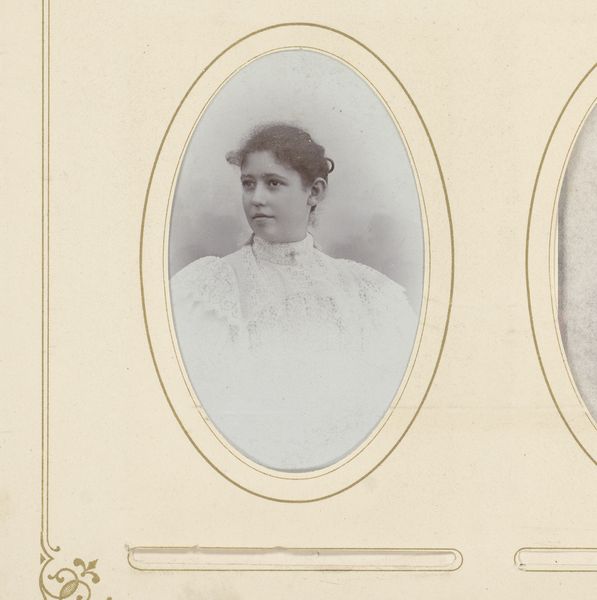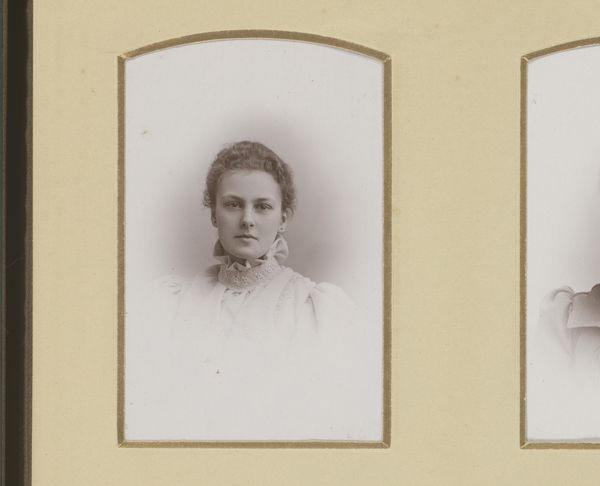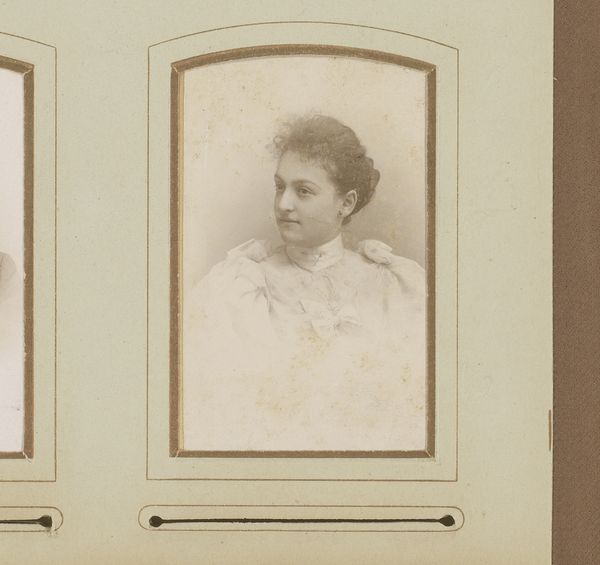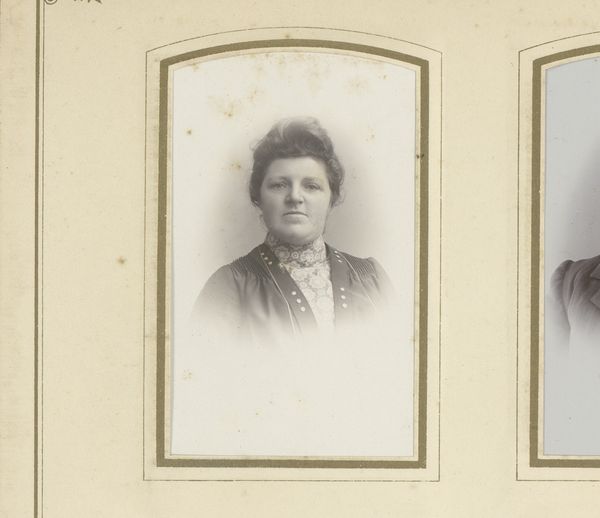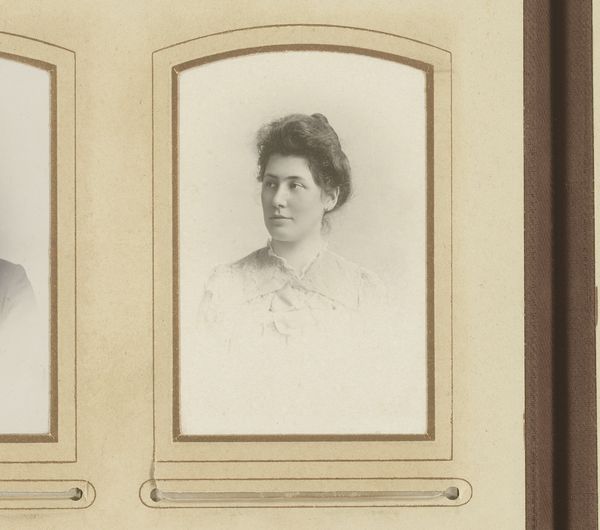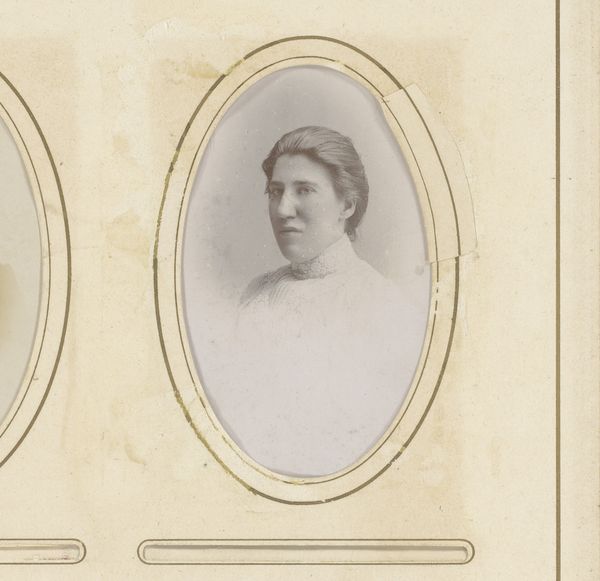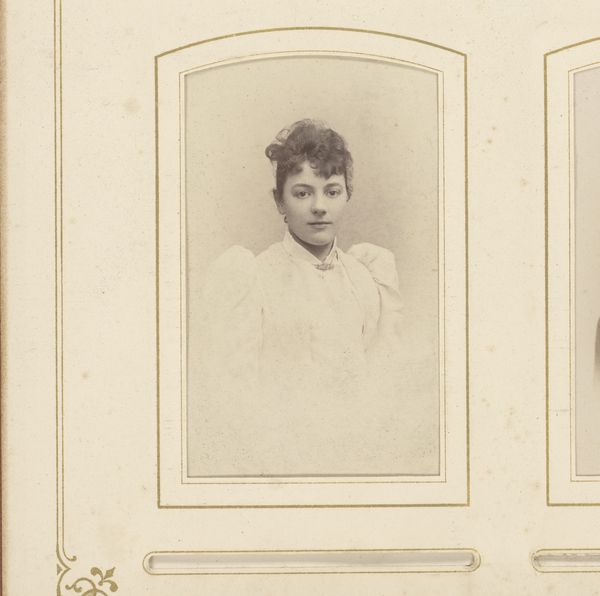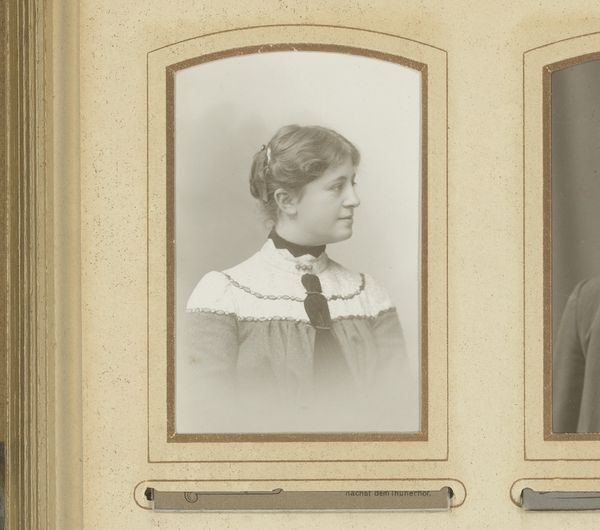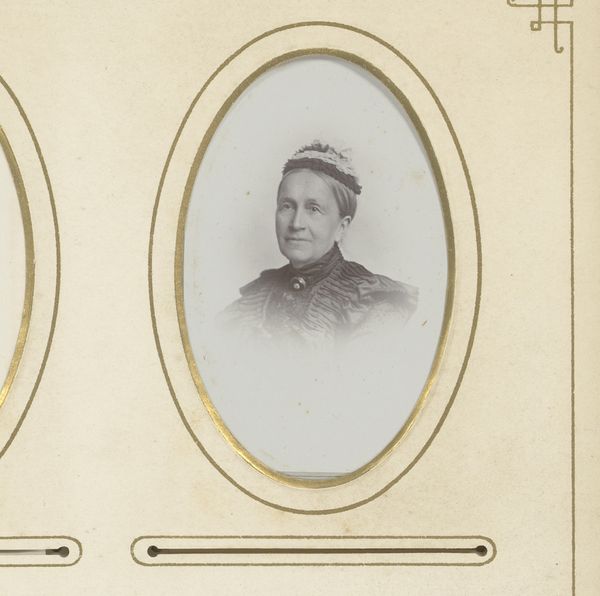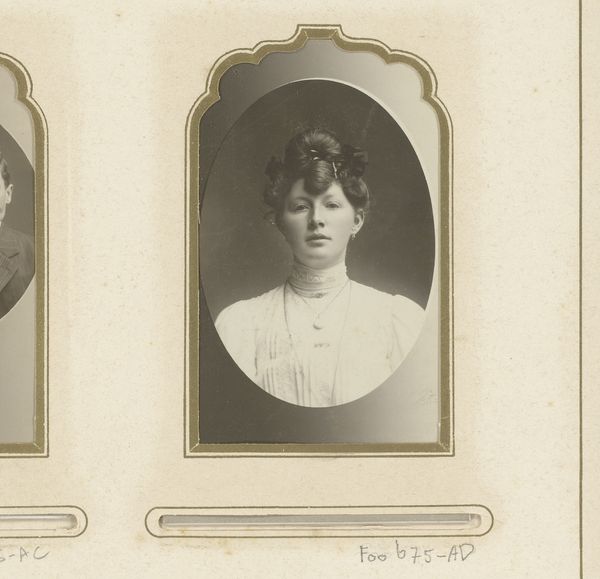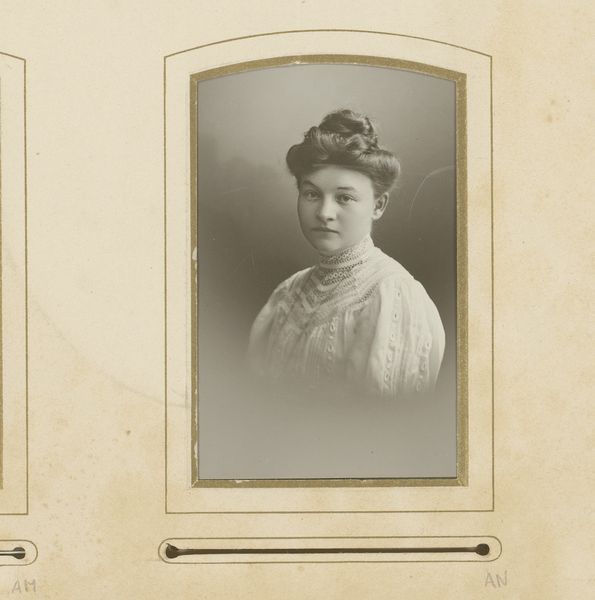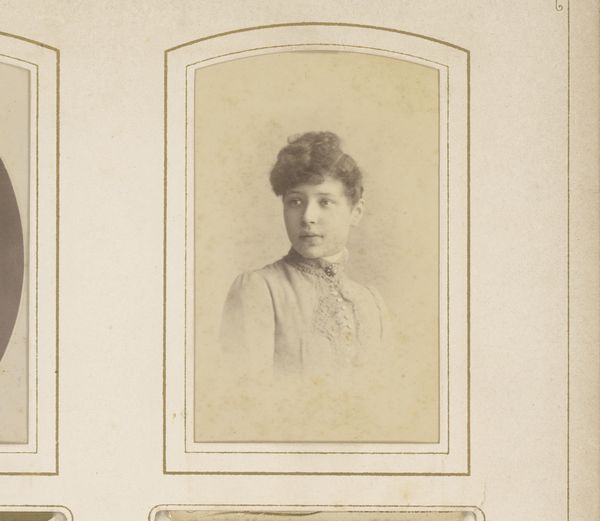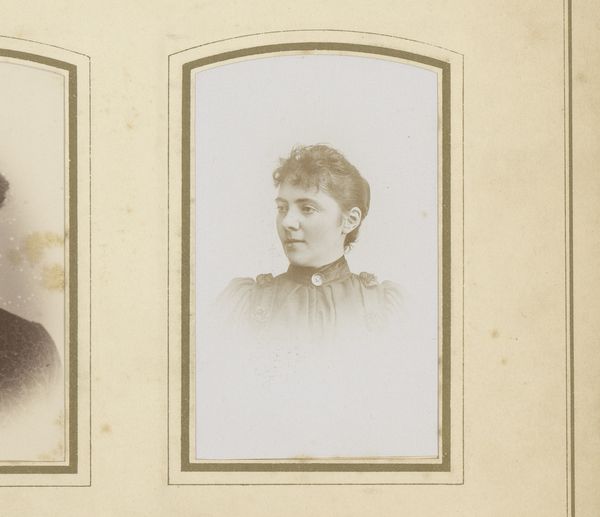
print, paper, photography
#
portrait
# print
#
charcoal drawing
#
paper
#
photography
#
19th century
#
realism
Dimensions: height 87 mm, width 53 mm
Copyright: Rijks Museum: Open Domain
Curator: This is a photogravure portrait of a woman by Albert Daniel Prummel. It was created sometime between 1880 and 1921, rendered on paper with a print-making technique using photography. Editor: The woman appears caught between eras. There’s a softness and a certain pre-war innocence but she also looks self-possessed, maybe even slightly defiant. It makes me wonder what sort of possibilities lay ahead of her, and what societal expectations she was confronting. Curator: These photographic portraits, particularly when rendered as prints, were incredibly important in shaping social identities and hierarchies during this period. Consider the rising middle class; displaying images like this signaled social status. Also, think about the evolution of photography itself, becoming more accessible yet still carrying a certain formality and performativity. Editor: Do you see it, too? Her gaze is steady. The slight asymmetry in her features—the way her mouth quirks just a bit—lends her such a relatable air, almost a challenge to the viewer. You have to remember that there are few truly honest pictures of women. And even fewer portraits in the context that women were given authority. So, where do you think she fit? Curator: It is an astute observation! Portraits became increasingly tools for solidifying societal norms but at the same time, this portrait seems more informal than many others from the same era, so perhaps a break from some of those strictures. The format itself—an oval frame within an album page—suggests this was a more private keepsake, perhaps meant for family. Editor: Exactly! These small acts are radical, don’t you think? Curator: Indeed, they push against the more grandiose and public functions that the portrait could fulfill, especially as photography became a means of memorializing as much as elevating. Editor: Thank you, Curator. I’ve definitely revised my initial reading of the portrait. Thinking of it in the larger contexts you’ve explained changes my understanding of her. Curator: And likewise, Editor. Bringing into relief what might have made this portrait meaningful from a female, and personal perspective helps me reflect on the changing role and expression of individual experience during the shift from the 19th into the 20th century.
Comments
No comments
Be the first to comment and join the conversation on the ultimate creative platform.
